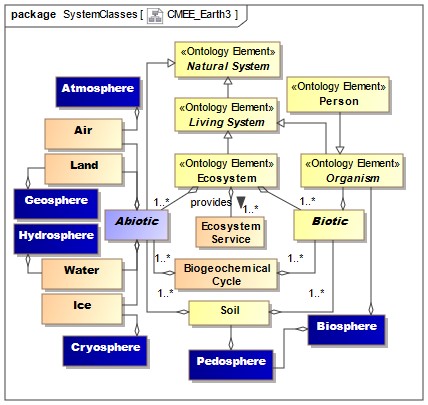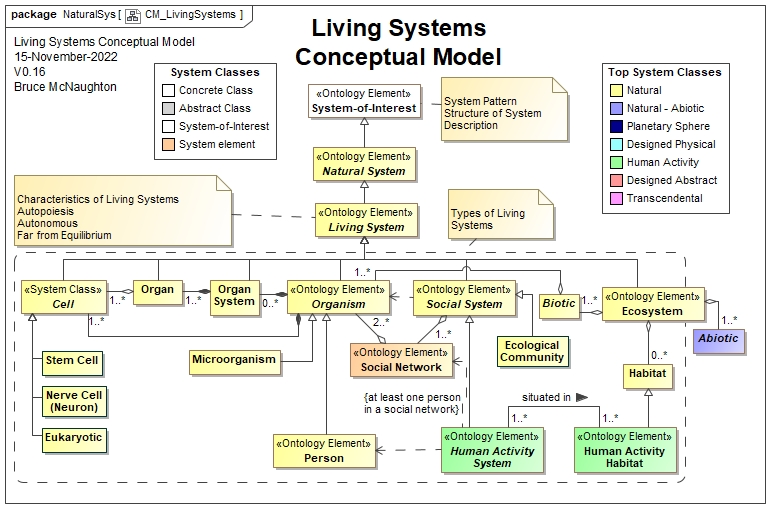Natural Systems
Name: Natural System
Based on: System (Abstract)
Each system will have its own purpose. Many of the systems identified will have their purpose within the context of an Ecosystem.
- Provide a natural physical environment for life to flourish (land, water, mountains, etc.)
- Evolve the biological organisms living on Earth
Systemic Measurable Variables
The emergent properties created or used through the interaction of the elements. This includes both desired and undesired.
Systemic Capabilities or Functions
Each natural system will have their own unique capabilities or functions.
- Home for all species of living organisms
- Maintaining an environment for life (oxygen, water, food, land, etc)
- Events (volcanoes, storms, earthquakes, etc)
System States
The various defined states that the system-of-interest can be in.
- Architectural states
- Transformational States
- Operational States
The stakeholders for a Natural System are formed in a Human Activity System where the members have an interest in the system-of-interest. There may be associated Human activity systems that form a cross-disciplined team to explore more of the aspects of a particular system. In addition to the humans (organisms), the following additional systems are also stakeholders:
-
all organisms living in an ecosystem (whole planet or specific ecosystem)
-
Any abiotic systems in the ecosystem (whole planet or specific ecosystem)
Each natural system will have their own unique boundaries and environment. Many of these are established by the ecosystem for the system-of-interest:
- Boundaries are established with the other types of systems
- Finite capacity and finite ability to maintain system integrity
- Interaction with other parts of the solar system (meteors, solar flares, etc).
Natural Systems consist of the following types of systems:

The following diagram highlights the types of Living Systems which are types of Natural Systems.

The natural systems provide a basis for the identification of ecosystems that include the following:
- Land (mountains, under sea, etc)
- Organisms (humans, animals, plants, trees, bacteria, etc)
- Water (including the water cycle).
- Atmosphere (air, protection, etc).
Note: A social system consists of organisms. This accounts for the social systems for ants, Bees and other living systems. When the social system contains one or more people, the social system is called a Human Activity System (HAS)..
Configuration / Scenario:
Describes any configuration / scenario attributes for a specific system-of-interest. This may not be appropriate for all system descriptions (e.g. patterns or abstract systems).
Cyclical (Repeating / Regular) Processes
Natural Systems have a number of types of regular / repeating cycles. Most have regular cycles based upon time.
- Daily Cycle
- Monthly Cycle
- Annual Cycle
Others have patterns based upon the characteristics of the elements within the system:
Biogeochemical Cycle
Development Life Cycle Processes
Natural Systems also have their own development life cycles that depend upon the environment and the system characteristics. Some of these are:
- Evolution due to normal reactions to change
- Catastrophic events
- Man made changes and events
The following references support this type of system-of-interest.